Dir. by Jia Zhang-ke
With so many directors now throwing in their cameras with the “single-shot scenes from a fixed position” school of filmmaking, there’s a growing problem for those of us who believe that a fundamental job of critics is to accurately describe what we see. Films built almost entirely from images that would have been described traditionally as “establishing shots” beg the question: How does one describe and evaluate this kind of montage (if that’s even the right word)?
I find it frustrating that, even after years of seeking out and championing directors who I casually label “meditative” or “contemplative,” I’m no closer to understanding how their films work, exactly, and I’m certainly no better at arguing the merits of a particularly “great” director as opposed to just a “good” one. Likewise, I’m often at an embarrassing loss when asked to evaluate a particular film by a favorite filmmaker who works in this style. (Oddly, I would love someday to be disappointed by a Hou Hsiao-hsien film if only because it would offer some tangible proof that I’m capable of being a . . . what’s the word? . . . critic of his work.) I skate by with a bit of critical sleight of hand: I allude to an aesthetic by uttering a few incantations — “static,” “elliptical,” “unhurried,” “natural” — and then, poof, the real form of the film disappears. Magic.
Case in point: Jia Zhang-ke’s Platform. Narratively and thematically, it’s a fun film to discuss. Like all of Jia’s work, it’s about the social, economic, and political forces that have radically altered China over the past three decades. Platform begins in 1979, when a group of teenaged musicians and dancers from the small town of Fenyang go to work with a Peasant Culture Group, traveling by bus from town to town and performing songs in celebration of Chairman Mao. By the time the film ends, two-and-a-half hours later, it’s 1989 and the Group has been transformed by privatization into a pop music and breakdance revue, playing to small and mostly uninterested crowds. Platform is one of those great small epics. It’s ambitious and wildly catholic in its range of socio-political concerns, but it’s also a very human and personal film. Jia has the sensibilities of a novelist, I think.
That’s the easy part, though. What about the form of the film? Jia’s camera is often “static,” with only occasional pans and tilts. His editing is “elliptical,” and the performances of his actors are “natural” and “unhurried.” (Abracadabra!) I also noticed that nearly all interiors, at least in small rooms, are shot on a diagonal from corner to corner, unless there’s a window, in which case he likes to shoot directly into the natural light, hiding his actors’ faces in the shadows cast by strong backlighting.
I want this post to do something more specific, though. The following nine images represent eight shots (with seven cuts and one pan) that account for approximately five minutes of the film’s running time. This section comes near the midpoint of the film, when the troupe hits the road for a brief tour.
Shot 1: Near-complete silence, with only the sound of wind and a brief exchange of dialog between Ming-liang (on right) and his cousin, who has taken a job at a mine. Notice how they crouch below the horizon. It’s a recurring motiff — people being overshadowed by the landscape, I mean.
Shot 2: Cut to a performance of traditional music by the troupe. Jia’s cuts are often more jarring on the soundtrack than in the frame, and in Platform he’s especially fond of cutting from silence or natural sounds to the rattling of a diesel engine (see shot 3). The ellision seems to completely displace this moment from the preceding shot, but notice the flag atop the tower. (Remind anyone else of this album cover?) I didn’t actually notice this graphic match until after grabbing the screen captures. The flag confirms that our p.o.v. has shifted almost exactly 180 degrees — from atop the hill looking down to below the hill looking up.
Shot 3: Cut to a road beside the mine, as the troupe rides away in the bed of a noisy tractor. (This shot is a mirror image of one that came three minutes earlier.)
Shot 4: A new sequence, a new truck, and no clues as to how much time or distance have been ellided by the cut.
Shot 5: Am I mistaken, or is this a cut from an establishing shot to a medium shot? Finally! Jia is doing some standard blocking. Ming-liang puts in a tape and listens to a pop song, which creates a kind of cultural or thematic ellision, too — from tradition and timelessness to of-the-moment fashion and coming-of-age angst.
Shot 6: So much for a standard shot breakdown. Instead of cutting to Ming-liang in close-up, as Hollywood continuity editing would lead us to expect, Jia shifts our p.o.v. by 180 degrees again. The other kids eventually gather around his door to listen to the music . . .
. . . but then become distracted by the sound of a passing train behind them. They run off toward the sound, and Jia’s camera pans 180 degrees to follow them. Our p.o.v. is now essentially the same as it was in shot 5, except we’re now on the far side of the truck.
Shot 7: Can you spot our pack of running teenagers? Like the pink flag in shot 1, they’ve been made tiny by distance and consigned to the bottom-right corner of the frame. It’s impossible to tell from this still image, but they’re actually running toward us, which means, of course, that our p.o.v. has shifted 180 degrees one more time.
Shot 8: After the train passes, the troupe races to the track to watch it race off. (The scene is a nice answer to the opening moments of the film, when Ming-liang is chastised for incorrectly mimicking the sounds of a train during a performance — which is forgivable, I would think, since he had never seen or heard one before.) Here we have another graphic match in the cut. Notice how the bridge in shot 7 and the guardrail and horizon line in shot 8 divide the frames at almost the exact same point. Note also the slivers of blue sky peeking over the rounded mountains in both images.
Edit: Out of curiosity, I did a quick superimposition of shots 7 and 8 and, sure enough, the horizontal line created by the guardrail in both images is an exact match:
I suspect that I could grab any other five-minute section from the film and find a similar precision in the cuts. Jia repeatedly breaks the cardinal rule of continuity editing, but the jarring ruptures of our perspective are modulated precisely by his rhythm (time is something I can’t really discuss with still images, unfortunately) and by graphic matches.
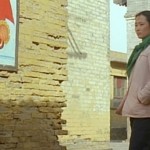
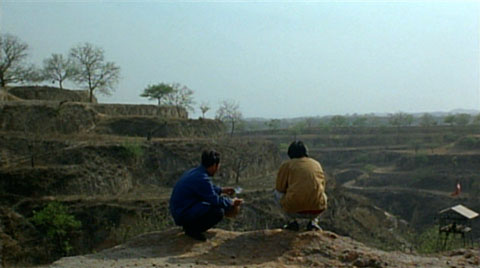
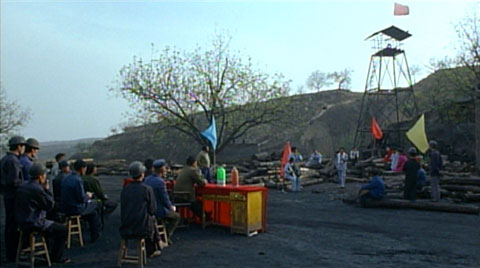
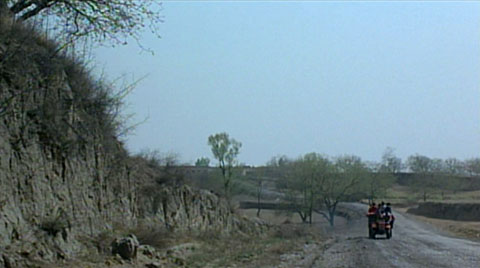
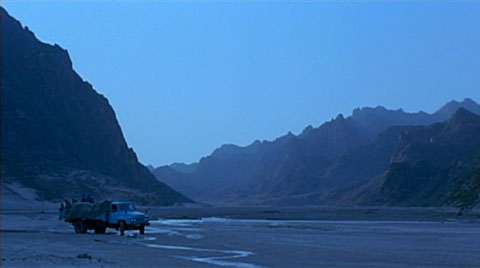


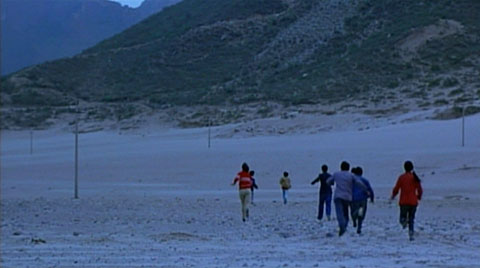
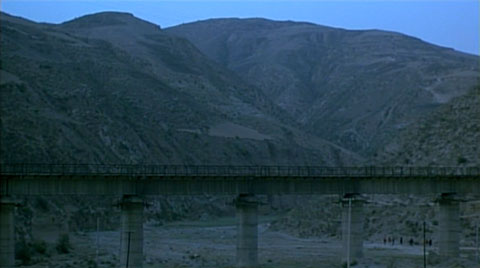
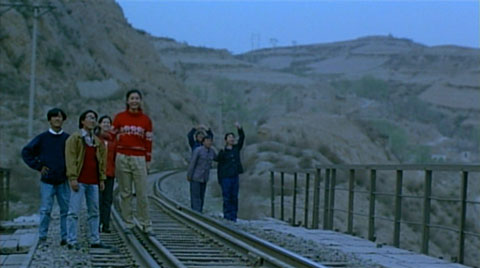
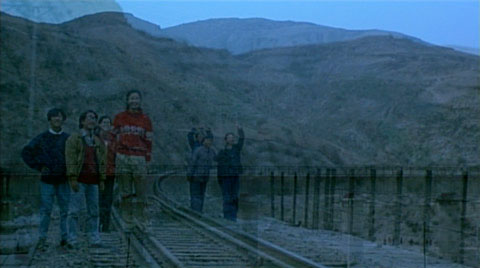
Comments
One response to “Platform (2000)”
your analysis is really refreshing-I too get so frustrated when critics use terms like “natural” and “contemplative”, without really analyzing pacing, editing patterns or mise-en-scene. thanks!